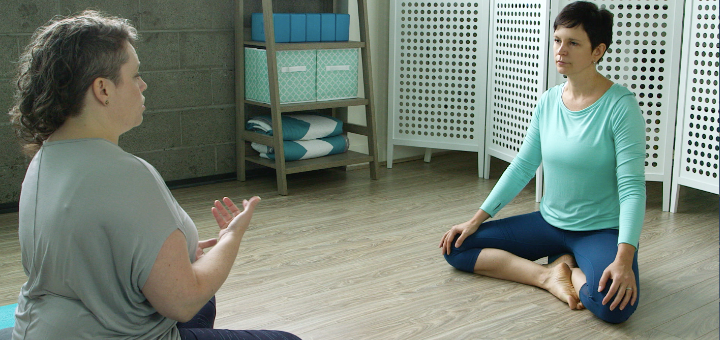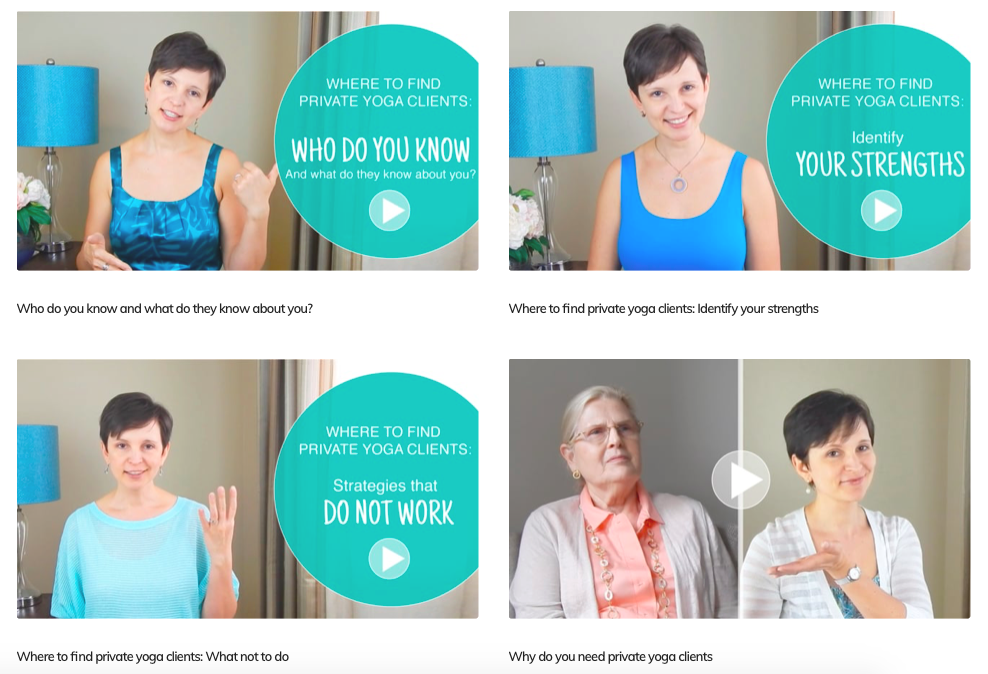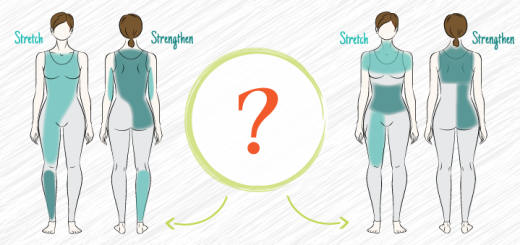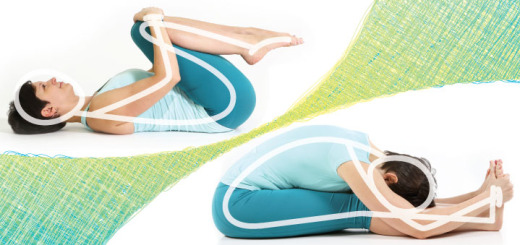Who sets the intention for the yoga class – the teacher or the student?
5When I go to a yoga class and the teacher asks students to set an intention for the practice, I usually get frazzled. What exactly does she want me to do? Decide which body part I want to work on? Plan on where I want to end up energetically? Define the mindset that I want to approach my practice with? Identify what’s important to me right now? Usually I settle for something vanilla like “I want to breathe better” or ignore the request altogether. Needless to say, with that kind of set up my intention-setting usually goes nowhere (and many teachers don’t ever mention it again anyway).
Then the question is – whose job is it to set the intention for the yoga class? Here are just some of potential problems that you can run into if you ask your student to do it:
- The student will probably have no idea what exactly you want from her. How specific does she need to be? Which part of her experience should she plan to affect?
- If you do not know what the student set as her intention, how would you know how to manifest it? Or will the student be responsible for manifesting her intention herself? What if your class goes in a totally different direction?
- Even if you do know what the student wants from a yoga class, how will you reconcile it with 20 other intentions that other students set? Will you ask each one? Will you try to address each one? Both of those are totally unrealistic.
I suspect that the idea of “setting your own intention” has become one of those things to which teachers might give lip service, but do not assign any real value. It might give the student a sense that she can customize the practice to her needs, but in reality, you cannot and should not try to match any practice to any random intention. If “setting your own intention” has no real value, than why do it? Generally, we want every single thing we do in a yoga class be purposeful, we do not want to waste time, energy and effort on random things.
In my view, setting an intention for the yoga class is an essential part of the practice and it is a responsibility of the yoga teacher, just like it is a responsibility of the school teacher to have a lesson plan. Class intention should simply answer the question: What are you planning to accomplish within this class? Once you know the answer to that question, you can decide on which tools you are going to use, how you put them together, and how you evaluate the result. The way you set your intention will be different depending on whether you are working with an individual student, a group of students with clearly defined needs, or a general group class.
In a private yoga session, we set the intention by asking the student some version of the question “Why are you here?” We want to understand why the student went through the trouble of seeking you out and booking a session with you – what does she want to get out of this? We need to understand what her primary concern is, and to develop a plan of how to address it in your work together. Your job as a teacher is to help her clarify her primary goal and then break it down into manageable pieces. Most goals cannot be accomplished within the space of one yoga practice, that’s why we need a long-term plan. But each yoga practice also needs to accomplish its own goals to show the student that change is possible, and give her the sense of accomplishment and encouragement to move toward bigger goals.
I believe it was T.K.V. Desikachar who said “Give your students 80% of what they want and 20% of what they need.” To me this means that we should always prioritize what the students think they need, and also include some sprinkles of what we think would benefit them. For example, I recently had a session with a new student who was mostly interested in managing her hip pain. But during our session I also noticed her tendency to clench her shoulders, hold her breath and move from one thing to the next without any pause or rest in between. While none of those things are causing her hip pain, they might be relevant, because they illustrate how she holds and carries her body, and lives her life in general. So, as we work on her articulated issue of hip tension, we will also include some movement, breath and awareness practices that I deem beneficial for her based on my teaching experience. As yoga teachers and practitioners, we are so lucky to have this huge assortment of yogic tools that can address a wide variety of issues.
However, most students have no idea about the breadth of issues that yoga can address beyond stretching and stress management. One easy way you can change that is by putting together a New Student Questionnaire that asks your new students a variety of questions beyond recent surgeries and current health conditions. You can ask your students about their stress levels, sleep habits, type and amount of exercise they get, their ability to focus and even their hobbies, to get an idea of how balanced their life is on each level of the human system (following the Panchamya model). Of course, we have to be mindful about not scaring our students away by asking too many questions, or making those questions too personal. But just by including questions like that in your form, you are implying that those things might be relevant to her current issues, and that yoga can help.
You can and should be very specific and precise when you set your intentions for working with individual students. This is what private yoga sessions are all about. But it doesn’t work the same way in a group environment. Next week we will focus on strategies for setting intentions for specific populations of students and general group classes – tune in!
[jetpack_subscription_form]
If you want to work with yoga students one-on-one but do not know where to start or how to make it work, check out our exclusive video series Private yoga clients: Why you need them, where to find them and how to work with them. It consists of 20 videos that cover all relevant topics, for example:
- Where to find private yoga clients (8 videos),
- Initial consultation (5 videos),
- Follow up sessions (4 videos), and more!
This series is available for free to all Sequence Wiz members. You can find it under EXCLUSIVE VIDEO SERIES on your account home page. Learn more about Sequence Wiz membership>.






















Dear Olga, I always look forward to your blogs (not sure what to call them). I read them. Reread them. Reread them again and gain so much from them. I’m in the Viniyoga training program – starting Session 3 the end of April. It was through you posts that I discovered this program. Much appreciation.
It’s so nice to hear it from fellow viniyogi Gail, thank you! Enjoy your third session of training, I miss those weeks of dedicated yoga studies.
Dear Olga, your posts are always helpful from an emotional, physical and intellectual level. Thank you for your honest, clear thought and expression.
That’s great to hear Sally, thank you! I love how you put it.
That is an interesting thread. Because I don’t see it mention that often anywhere. I learnt to set an intention for my practice while doing my yoga training. My teacher even suggested to make the unrolling of the mat also part of our personal session, a sort of ritual to already get into our practice, set the mind into it.
So I always set an intention at the beginning of each group class explaining that it is part of a yoga session. It’s also a way for me to involve them in what is in fact their practice. So I tell them what the theme is and then I suggest an intention related to it. Admittedly, it often comes back to awareness of the breath, presence to self. And when I begin a new class with new people then the suggested intention is often to keep the mind open, open heart, no judgment, that sort of thing.